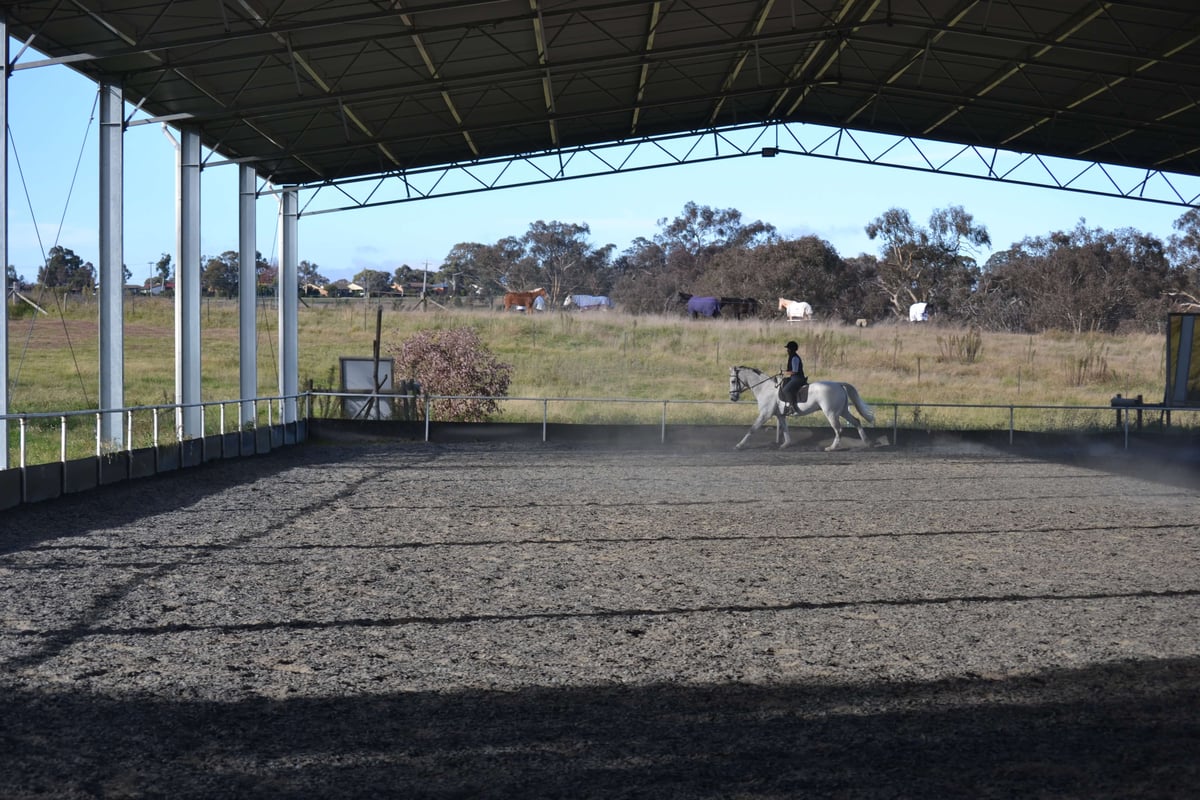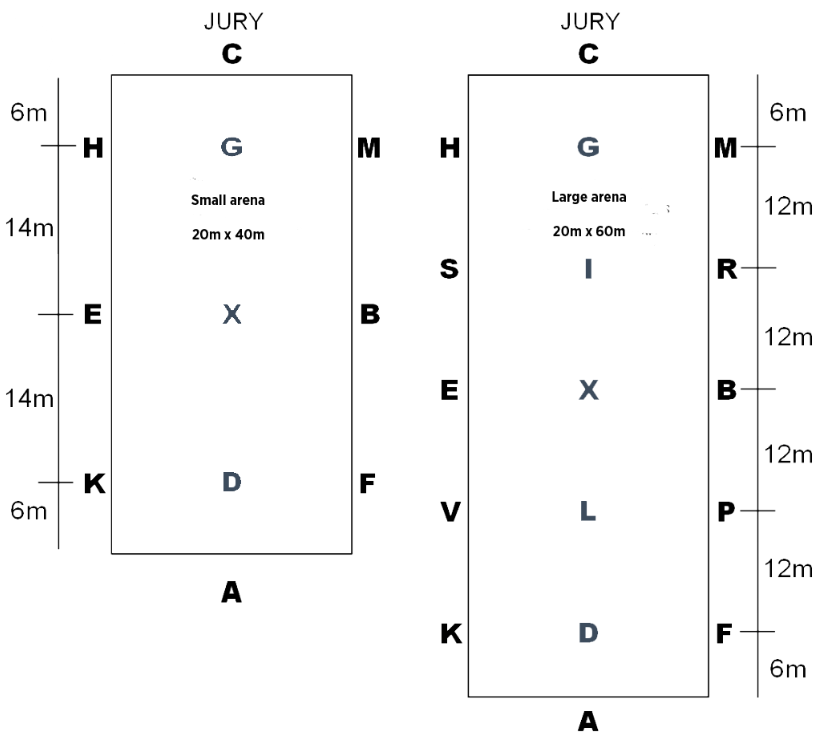
Whether you’re a dressage competitor, or you ride horses just for fun, the horse arena that you choose to train in needs to be of adequate size for your training needs. There are different sizes and regulations for different horse arenas, depending on its purpose. If you’re looking to build your own arena for something like jumping or dressage, then it’s important to make sure you’ve got enough space for your requirements.
In this blog we’ll outline the different types of horse arena courses, and what size arenas are best suited for each of these.
Dressage
In Dressage competitions, a horse and rider perform a series of predetermined movements known as ‘figures’ or ‘movements’. The arena has 12 lettered markers placed symmetrically indicating where movements are to start and finish, and where changes of pace or lead are to occur. In all dressage competitions, the horse has to show three paces: walk, trot and canter as well as smooth transitions between these paces.¹
Dressage Arena Size
A dressage arena needs to be flat and level and is 60m long and 20m wide. These measurements are for the interior of the enclosure only, which is separated from the public by a minimum distance of 10m. If the competition is indoors, the arena is a minimum distance of 2m from the wall.
A dressage enclosure will also consist of a low white fence about 30cm high. The surface of the arena is made of sand or a sand mix with a non-slip base.
The 12 standard dressage arena markers are A-K-V-E-S-H-C-M-R-B-P-F. The letters on the long sides of the arena, nearest the corners, are 6m in from the corners and 12m apart from each other.²

Eventing
Eventing is a competition which comprises of three equestrian disciplines – dressage, cross-country and show jumping. It has two main formats, the one-day event (ODE) and the three-day event (3DE).³
Eventing Arena Size
The first day of eventing is the dressage event. As mentioned above, a dressage arena needs to be flat and level and is 60m long and 20m wide.
The second phase – cross-country consists of approximately 12 to 20 fixed jumps at lower levels and 30 to 40 at higher levels, placed on a long outdoor course. These fences consist of natural objects like logs and stone walls as well as various obstacles such as water, ditches and banks.
The third phase is show jumping where 12 to 20 fences are set up in an arena. These fences are brightly coloured and consist of elements that can be knocked down.²
Jumping
Jumping is the best known of the equestrian disciplines where both men, and women, compete as equals in both individual and team events. In jumping competitions, the horse and rider are required to complete a course of 10 to 13 jumps. The objective – to test the combination’s skill, accuracy and training.
The aim is to jump the course in the designed sequence with no mistakes – a clear round. If any part of an obstacle is knocked down or if the horse misses a jump, penalties are added.⁴
Jumping Arena Size
During a Jumping competition a horse needs to jump through a course of between 10 to 16 obstacles which includes vertical jumps, spreads, and double and triple combinations, usually with many turns and often change of direction. These obstacles can be up to 1.6m high and with spreads of 2m. Types of jumps include vertical, triple bar, cross rail, and open water.²
Now that you know the ins-and-outs of various horse arena courses and the different size each horse arena should be, you’ll be well equipped when deciding which sized arena will suit your specific requirements.
Find out more about an ABC Sheds dressage arena by clicking here.
¹https://www.equestrian.org.au/Dressage
²https://www.dlgsc.wa.gov.au/sport-and-recreation/sports-dimensions-guide/equestrian
³https://www.equestrian.org.au/Eventing
⁴https://www.equestrian.org.au/Jumping
-1.png?width=3641&height=660&name=abcshedstransparent2%20(1)-1.png)









